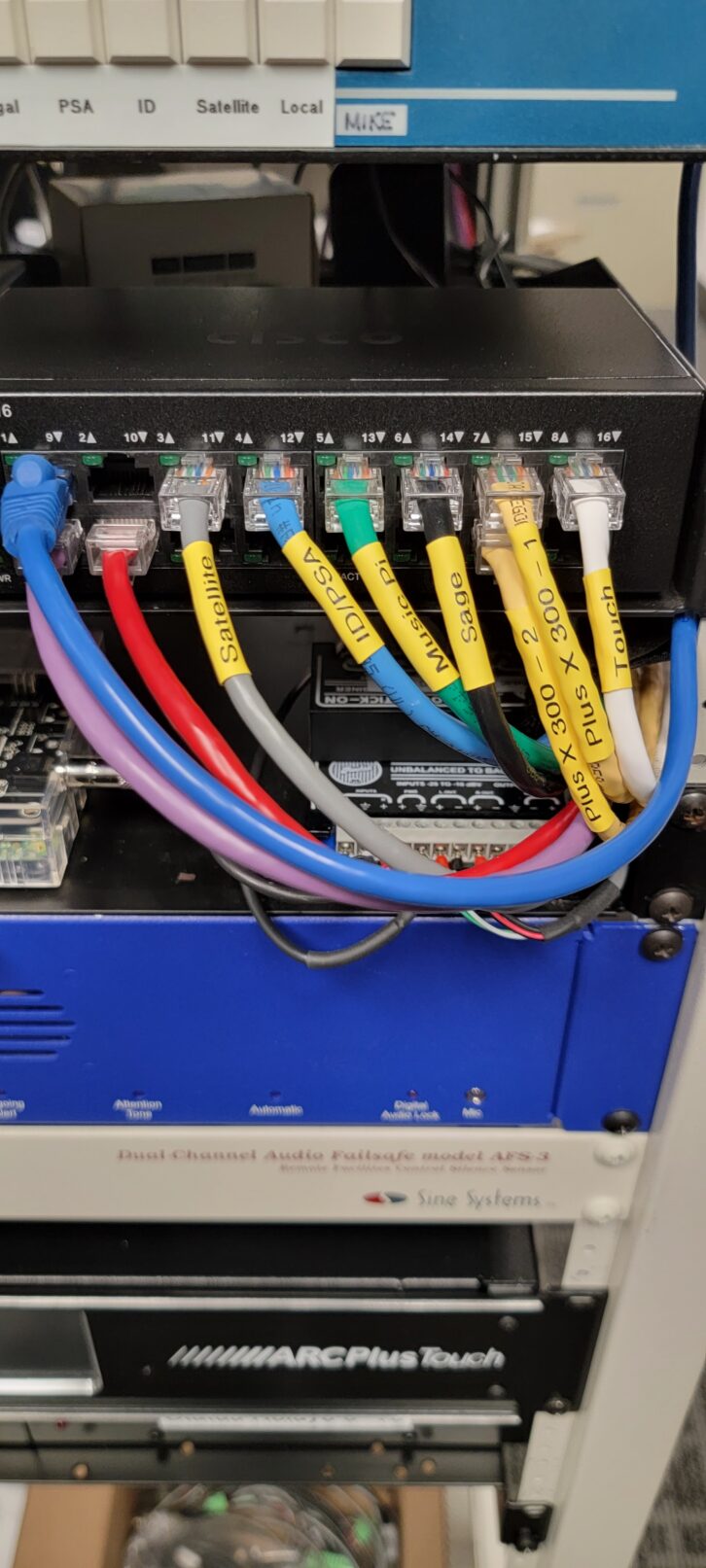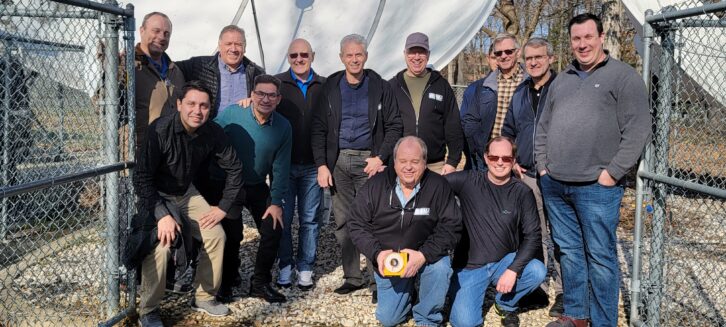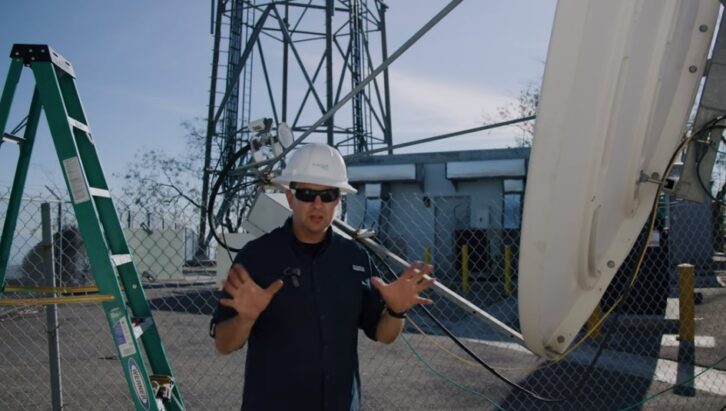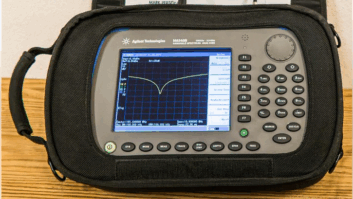Roy Becker, senior engineer with Charlotte’s Bible Broadcasting Network, shares an improvement on wire marking. You’ve probably used a Brother P-Touch label maker. Now there’s a printable heat shrink tubing cartridge that works with many of the models.

These labels won’t fall off because adhesive dries out; nor will the label legend smudge or rub off. What a great idea!
The only caution is that the heat shrink tape doesn’t work with all P-Touch models, so check before you buy. Several choices are available from Amazon.
Roy recently took time from his regular duties at BBN to provide a satellite maintenance and re-pointing seminar for a group of field engineers who service the BBN facilities in Central and South America. Engineering refresher courses are always welcome but especially if you are working in a region that doesn’t have a lot of tech support or educational resources available locally.
The second photo shows the group at the conclusion of the training, as they gathered around the BBN uplink and downlink dishes in Charlotte, N.C.

What could go wrong?
If you’re a little rusty on those satellite repositioning skills, here’s a good YouTube link prepared by Marcos O’Roarke (aka “SoCal Broadcast Engineer”). You can follow Marcos as he encounters multiple issues during what he had expected would be a “simple” project to repoint a dish.
As all engineers know, even the simplest projects can be fraught with problems, and Marcos’ experience is no exception.

It’s the little things that matter
Paul Sagi in Malaysia liked our trick about modifying a pair of forceps with a rubber grommet, to hold a bolt. He said a crochet or rug hook could be used to grab onto any springs. As we’ve seen time and again, every tool has multiple uses!
Speaking of past tips, broadcast engineer Ken Lundgren sends a word of caution after reading Buc Fitch’s “Ditch the Wall Wart” project in December.
If you do decide to lose a wall wart for a piece of audio equipment, think twice about random placement of the AC power transformer inside a box with audio circuitry, because it may induce hum. Ken points out that toroidal current transformers or metal shielded casings are used in such situations.
Buc’s project modified a Sine Systems Transmitter Remote Control, so this caution would not apply, but keep Ken’s thought in mind should you modify other products’ power supplies.
Understanding EMI
And speaking of interference, Engineering Manager Dan Slentz checks in with a brief tutorial he found from Rohde & Schwarz on electromagnetic interference and how it can be detected and debugged using an oscilloscope. The paper discusses near-field, magnetic and electric probes as well as the use of an oscilloscope in Fast Fourier Transform mode.
Easy pickings
Contract engineer and frequent Workbench contributor Stephanie Donnell, WA1YKL, notes that as copper prices rise, so does the temptation to steal ground cables and strap from transmitter sites.
We’ve mentioned Garner Wet-R-Dri asphalt-based roofing cement. It’s nearly impossible to remove and therefore discourages theft. Copper reclamation facilities also will not accept strap covered with tar.
Stephanie suggests adding a fake ground jumper to the mix. The fake provides a circuit to the site ground that energizes the coil of a small relay. The power for this device can be provided by the wall wart you removed previously!
So long as the relay is “on,” it keeps one of the status inputs feeding a Burk site controller “low.” If the relay switches off because the fake jumper cable is cut, an alarm condition would occur.
Giving this further thought: For best results, use a bright red or orange cable, lying on the gravel in plain sight, something to catch the thief’s eye. You know … “easy pickings.”
Share your expertise! Workbench submissions are encouraged and qualify for SBE recertification credit. Email [email protected].







